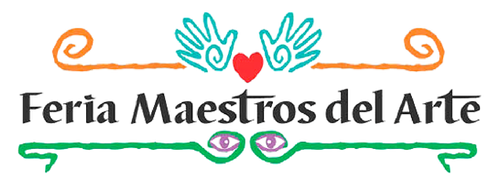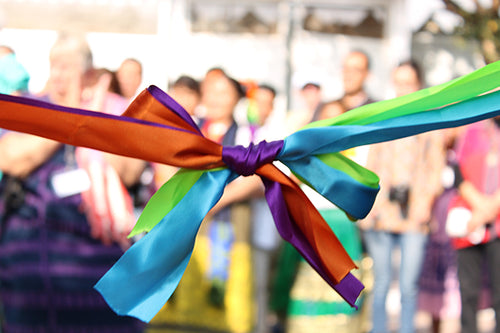
Marío Saulo Moreno Contreras & Saulo Moreno Hernández (? - 2018), Atlacomulco, Mexico
Marío Saulo Moreno Contreras is the son of internationally known artist, Saulo Moreno Hernández (? - 2018), who lived in Tlalpujahua, Michoacán, until his death in 2018. For more than 50 years, he had shown himself to be a man committed to the creation and recreation of his environment, an arduous fighter and defender of the traditional arts and festivals, he never sought prestige, money, glory, only to further his love and knowledge for Mexican handicrafts based on death — a subject that is reinvented day-by-day in a Mexico he believed is more mediatized and without roots for its traditions.
Mario shares his father's inspiration that comes from his personal vision of his daily life, but his only way of seeing his environment, reflected in the production of his skulls that transcend the Día de los Muertos and gave life to death by making it irreverent, stinging or mocking. Their famous devils, who behind the mask horrify with their ugliness, hides another face full of magical meanings that captures in symbolism the blind forces of man and reminds us of pre-Hispanic times. The mining skeletons are a humble tribute to the fallen miners of Tlalpujajua who died without recognition of their work.
All of father and son's pieces constituted true works of arte popular, each sculpture made with wire, welding, paper, glue and paintings — Saulo called them alambroides and were exhibited in Mexico, U.S., Canada, Japan and Europe. In 2008, Saulo received a special award for his work from the government of Michoacán and in 2009 garnered 2nd Place in Cartoneria at the Gran Premio Nacional de Artes Populares.
Mario Saulo began learning his craft while playing in his father's workshop and creating his own sculptures just as a game. By age 12, he dominated the technique so well he began selling his artwork. By 21, he had participated in several folk art contests and many collectors embraced his work, considering him the continuation of his father’s artistic style. Mario has experimented with different themes, but those related to the Day of the Dead are his most celebrated. In his whimsical style, he skillfully makes sculptures representing both historic and everyday characters.
It takes Mario between one to two weeks of work to complete one of his creations. He starts with malleable, galvanized wire, molding it with his hands to create a wire-frame figure, wrapping his finger-tips with masking tape to protect them from injuries. The wire-frame model serves as his "sketch". The gauge of the wire varies according to the ultimate size of the creature. As the piece takes shape and he starts to perceive its proportions, he often finds himself deviating from the image in his mind to something else so that the end result differs from the original intent. This phase is usually completed in one and a half to two days.
The next phase involves the use of brown wrapping paper — the same paper used to wrap fresh tortillas. He wets the paper and crinkles it, then straightens it. He usually has to do this several times to get uniform moistening. Then as the paper is unwrinkled, he begins applying it in layers. He likens this phase to sculpting.
Step three involves drying the wrapped armature. This is the most crucial. If the drying is less than uniform or in any way incomplete, it causes the wire frame to bend, changing its shape. Adequate drying must be judged by touch and tapping with his fingers. He affirms that the sound and feel of the contact with the object tell him what he needs to know to be able to proceed.
Then he applies a watery mixture of glue and 'blanca de españa', a kind of primer, with a brush. It must again go through a drying stage. Then he paints it. Over the years he has experimented with different types of paint and now uses an automotive-type of acrylic paint. If he doesn't want a shiny finish, he mixes it with a special compound to dull it.
Ave Ata #7B
Planta Alta
Col. Centro
Atlacomulco, Mexico
712 194 1514 cell
moreno.artes@hotmail.com

